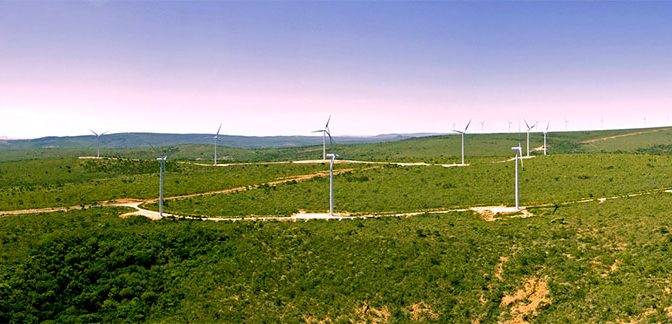The “season of strong winds” is open, as the phenomenon that occurs in northeast Brazil is known, during this period, which runs from July to October, an increase in the quality and intensity of the winds is noted due to currents marine. For this, it is common to reach record peaks of wind energy generation, since the wind turbines of the wind farms have the maximum use in these climatic conditions, and Neoenergia contributes to this scenario, with its 44 wind farms, 17 in operation and 27 under construction , all in the Northeast. Thus, it represents around 5% of wind power generation in the region, with an expected growth of 15% by 2022.
“The largest source of power generation in the Northeast comes from renewable resources, in this case, wind power. Therefore, by reaching maximum wind energy generation, the states of the region become less dependent on other sources of energy, such as hydroelectric and thermal, becoming self-sufficient. At certain times of the year, wind power generation exceeds the load demanded, so the supply goes beyond the demand and the region becomes self-sufficient, even exporting the excess energy to other locations ”, explains the operation and maintenance manager. (O&M) of Renovables de Neoenergia, Rodrigo Errera.
The self-supply achieved in the Northeast is also relevant, mainly because the second semester is a period of drought in this region of Brazil, according to Diogo Mariga, the superintendent of operation and maintenance (O&M) of Neoenergia renewables. “Thus, wind power generation comes to complement hydraulic generation, with the fall in reserves due to less intense rains. It is important to note that Brazil has a high quality of wind throughout the year. With this, Brazil has the highest wind energy generation capacity factor among the countries where Iberdrola, Neoenergia’s controller, operates”.
Only in the first week of August, the National Electric System Operator (ONS) registered three records of average power generation in the Northeast. The most recent occurred on August 6, when the wind force reached an average 9,049 MW. This capacity is enough to supply the equivalent of 94.4% of the electricity demand in all the states of the region. The other records were recorded on day 5, with the average wind energy generation of 8,854 MW and on day 2, 8,780 MW.
There are several reasons that lead to an increase in the quality and intensity of the winds, which results in a better use of wind farm generation. Among them are the solar radiation on the earth, the difference in temperature between the equator and the tropics, as well as the temperature of the waters of the oceans and the relief of the regions.
Specifically in the northeast region of Brazil, the better quality of the wind in terms of direction, speed and density is also influenced by the climatic phenomenon called El Niño. It is characterized by the warmer temperatures of the Equatorial Pacific Ocean, which generates an improvement in wind turbines generation, since, during these periods, less rainfall occurs in the region, favoring the production of energy through the winds.
“From July to October we have the best winds of the year, more unidirectional, that is, with very little variation in direction. This is very important for wind farm generation because every time the wind changes course, the wind turbine needs to adjust, which reduces its efficiency. Furthermore, it is during this period that the wind reaches ideal speeds, above 12 meters per second, when a large part of the wind turbine models reach their generation peak ”, says Errera.
Neoenergia’s investment in wind power generation is in line with the company’s commitment to contribute to the fight against climate change. “Wind energy is a clean and renewable source of energy, which does not emit pollutants in its operation. In this way, the high wind season maximizes the benefits of wind energy by further reducing the emission of greenhouse gases ”, says Mariga.
Currently, Iberdrola’s subsidiary company has 17 wind farms in operation in the states of Bahia, Rio Grande do Norte and Paraíba, with an installed capacity of approximately 516 MW, enough to supply more than 1.1 million Brazilian households, avoiding the emission of more than 830 thousand tons of CO2 in the atmosphere. In two years, the company’s installed capacity in wind power generation will triple to 1.6 GW. This will happen with the completion of the Chafariz (PB) wind energy complex, with 12 wind farms, adding 471.2 MW and Oitis (PI and BA), with 15, which will add 566.5 MW to this total.
Renewable, hydroelectric and wind energies represent 86.8% of the energy generation in Neoenergia.
In 2022, this figure should reach 90%, exceeding the Brazilian profile. With this, the company is aligned with the objectives of the Sustainable Development Goals (SDG) provided by the United Nations (UN). The brand’s main focus is SDG 7, aimed at guaranteeing reliable, sustainable, modern and affordable access to energy for all, in addition to SDG 13, which aims to take urgent measures to combat climate change and its impacts.


